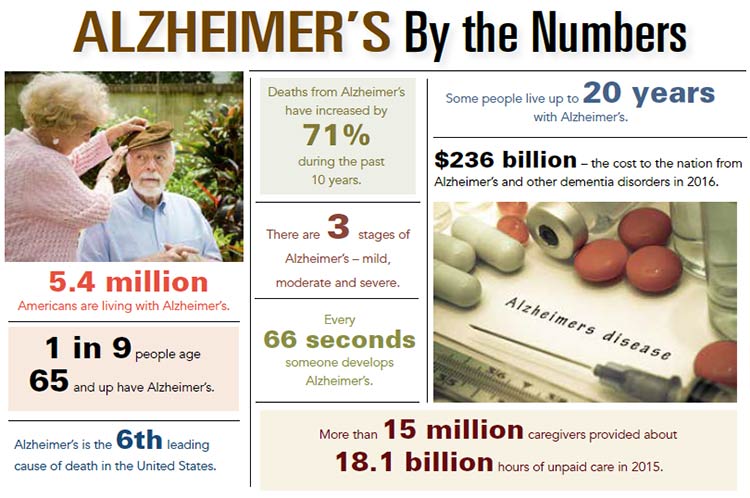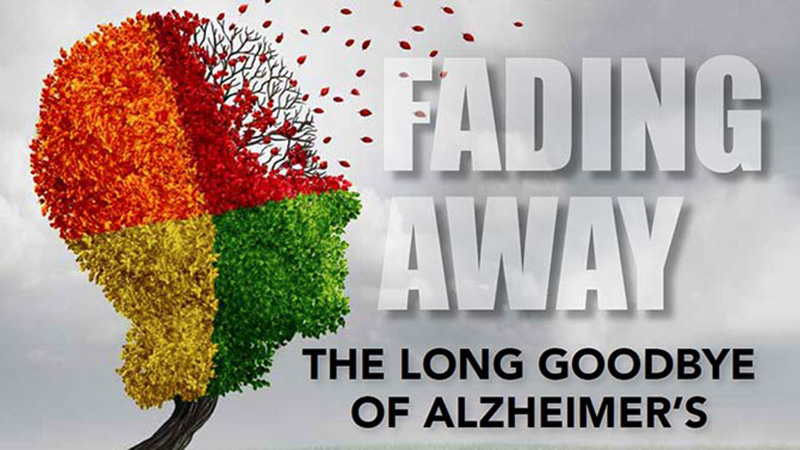Doris and I were chatting amiably. She was laughing at a story I was telling when I saw the light leave her eyes. In an instant, she had lost track of our conversation.
That was just one of the signs I noticed while she stayed with us a few weeks. A lot of the time, Doris seemed herself – smart, funny, wise – and I’d think it was my imagination that she had Alzheimer’s. Then she’d ask me the same question 10 times in as many minutes. Or her mood would change or she’d be forgetful.
Alzheimer’s steals into the brain of your beloved mom or dad, replacing memories with gaping holes. It is in no hurry, and the beginnings are so subtle. Everyone forgets a little as they age, right? So we don’t worry about the ever-so-slight changes until they demand our attention.
But the forgetfulness of Alzheimer’s is different. It is not forgetting where you left a pencil. It is forgetting what a pencil is.
Imagine your brain as a power station generating electrical currents through the neurons, also known as nerve cells. The signals race through millions of neurons via connections called synapses, powering your ability to walk, to talk and to think.
The neurotransmitters are the brain’s delivery system, and when that system is altered by the presence of disease, chaos is the result. Ultimately, the neurons die, the networks fail and the brain shrinks. Scientists think that plaques – abnormal bits of protein between neurons – and tangles – strands of another type of protein – are implicated in the degeneration of the brain. The area most affected is the cortex and the hippocampus, which is central to creating new memories. Patients with Alzheimer’s may retain memories from long ago but might not be able to remember things that happened yesterday.
Doris could recall clearly, in great detail, events when she was a young adult, but, stunningly, had no memory at all of her house being struck by lightning and burning nearly to the ground just a few days earlier.
“I don’t remember the fire,” Doris said, “but I’m glad Lucky – her beloved dog – is all right.”
Living at home was no longer an option for Doris, yet she was not ready to transition to an Alzheimer’s facility, often referred to as memory care. Although she remained active, enjoying long walks and swimming, she required assistance for some daily activities and with medications.
It often takes several years for a diagnosis of Alzheimer’s to be made because, in the beginning, the symptoms can be quite subtle. Although there is no cure, there are treatments that may slow down the progression of the disease.
Alzheimer’s disease can have a tremendous impact on caregivers and family members. Loved ones may exhibit personality changes in addition to memory loss, and some patients may have a tendency to wander. It is important to learn as much as possible about the different stages, the medications that may help and how to adapt to these changes.
Beth Sulkowski, vice president of communications and advocacy for the South Carolina chapter of the Alzheimer’s Association, explained that “There are many ways that we can learn to adapt as caregivers: to make the home safer, to communicate more effectively as dementia progresses and to respond to behaviors that might arise.” Sulkowski urges families to be aware of support services – not just for patients but for caregivers.
The Alzheimer’s Association (www.alz.org) is a worldwide organization offering a great deal of information and resources to help families cope with all types of dementia. On the local level, there are support groups in nearly every South Carolina county.
“The South Carolina Alzheimer’s Caregiver Respite Program can provide financial assistance to dementia caregivers, giving them a much-needed break by helping them arrange short-term care through in-home care agencies, adult day care center or short term residential care,” Sulkowski said.
Tumiko Rucker is the chief executive officer for the Sea Island Comprehensive Health Care Corporation, which serves families in the sea islands west of Charleston. The organization offers adult day care five days a week for up to 31 clients at its location on Johns Island, including FDA-certified meals as well as activities such as field trips. Transportation to and from the center is available.
SICHCC’s services reach beyond the building into the community with respite care for families.
“We have registered aides who can provide respite care for a few hours, a day or several days,” Rucker said, explaining that their clients can relax and “know their family member is being cared for at home.”
Home health care by certified providers also helps families care for their loved ones. They can provide assistance administering medications and with activities of daily living such as bathing.
But, most importantly, let your loved ones live life as fully as possible. They are still making memories for you.
LEARN THE 10 WARNING SIGNS
- Memory loss.
- Difficulty with daily activities such as handling the bills or inability to follow instructions.
- Inability completing common tasks.
- Confusion about time or location.
- Visual and spatial problems.
- Trouble following conversations or difficulty writing.
- Losing items and unable to retrace steps.
- Poor decision making.
- Withdrawal from activities and social situations.
- Personality changes, such as suspicion, anxiety, depression and fearfulness.








